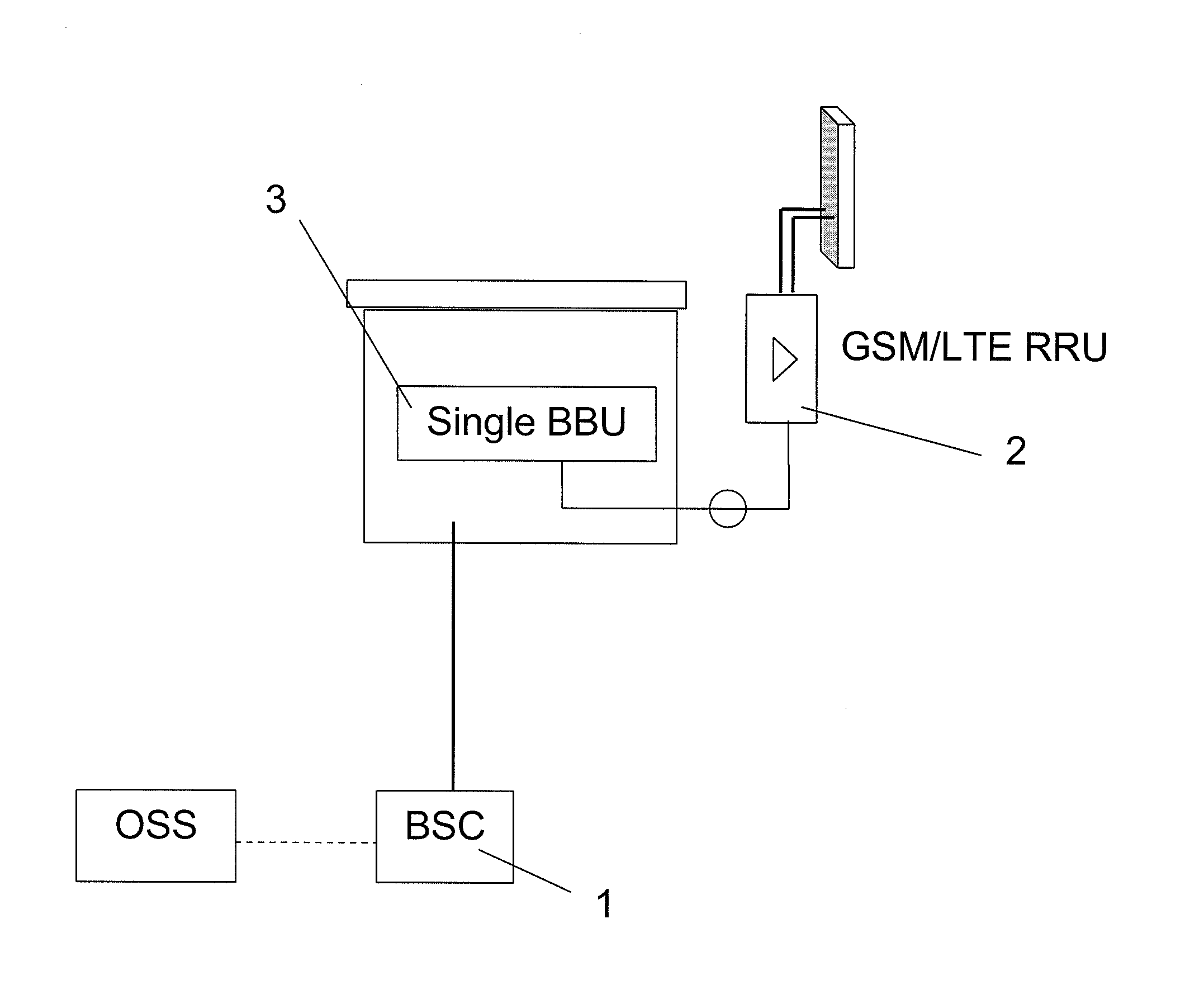Optimizing bandwidth usage in a cellular communication network
a cellular communication network and bandwidth optimization technology, applied in the direction of network traffic/resource management, electrical equipment, radio transmission, etc., can solve the problems of inefficient parameters, inability to compensate for loss of gsm capacity (1.4 mhz), and insufficient bandwidth to dedicate to lte. , to achieve the effect of improving the bandwidth usage of the cellular communication network
- Summary
- Abstract
- Description
- Claims
- Application Information
AI Technical Summary
Benefits of technology
Problems solved by technology
Method used
Image
Examples
Embodiment Construction
[0025]FIG. 1 illustrates a single Radio Access Network (RAN) arrangement, including a base station 1 with a Remote Radio sub-system 2, and single Base Band unit (BBU) 3 capable of supporting both GSM and LTE RATs simultaneously. In this example a single BBU 3 is used regardless of whether the Remote Radio sub-system includes a single RRU 2 or a plurality of different RRU 2 (i.e. one for each technology). This Single BBU is arranged to control both GSM and LTE systems in accordance with the results of different measurements (e.g. traffic level and count of LTE-enabled terminals in cell).
[0026]FIG. 2A illustrates the activation of LTE in a cell where only GSM is activated. Initially, a bandwidth of X MHz has been allocated to the operator with that bandwidth used only by GSM, [i.e. no LTE carriers are active].
[0027]FIG. 2B illustrates a similar scenario, where there is an existing LTE cell co-located (having Y MHz in bandwidth) with the GSM cell (having Z MHz in bandwidth): both LTE a...
PUM
 Login to View More
Login to View More Abstract
Description
Claims
Application Information
 Login to View More
Login to View More - R&D
- Intellectual Property
- Life Sciences
- Materials
- Tech Scout
- Unparalleled Data Quality
- Higher Quality Content
- 60% Fewer Hallucinations
Browse by: Latest US Patents, China's latest patents, Technical Efficacy Thesaurus, Application Domain, Technology Topic, Popular Technical Reports.
© 2025 PatSnap. All rights reserved.Legal|Privacy policy|Modern Slavery Act Transparency Statement|Sitemap|About US| Contact US: help@patsnap.com



